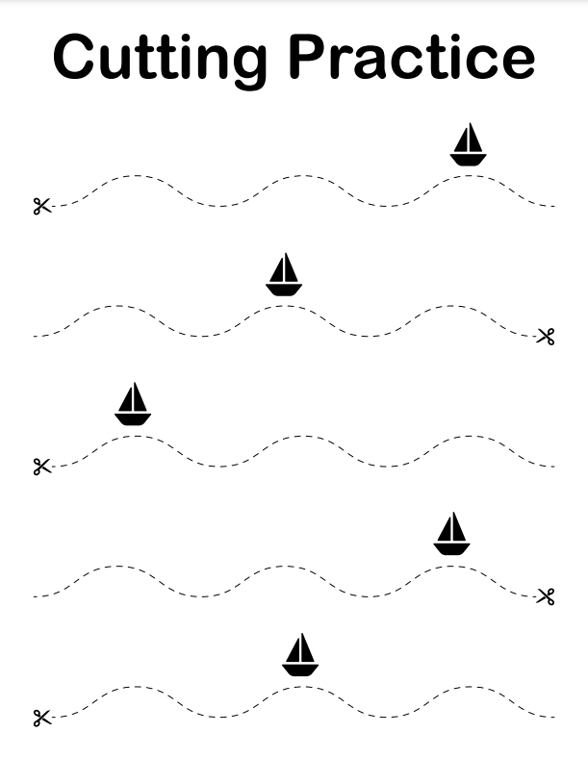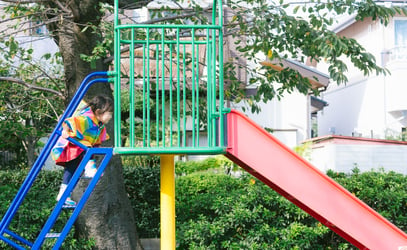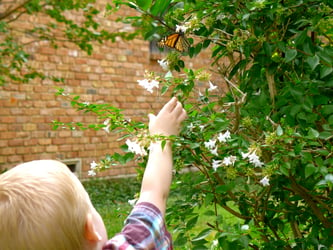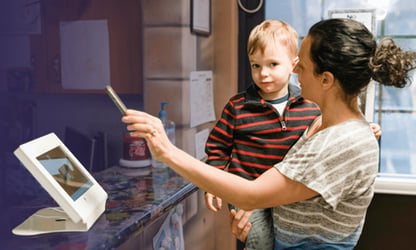Unlock the potential of preschool learning with our guide to the top 25 cutting activities for preschoolers! These aren't just crafts; they're stepping stones to mastering essential motor skills that pave the way for successful learning and daily living. Scissor skills development is the unsung hero of early childhood development, crucial for tasks as diverse as crafting and self-care. Our expertly curated list offers engaging, fun and skill-enhancing activities designed to develop precision, hand-eye coordination and dexterity in young learners. Dive in and discover how to transform simple cutting exercises into powerful tools for growth and creativity in your preschool classroom.
Table of Contents
What Are Cutting Skills for Preschoolers?
Why Are Cutting Activities Important for Preschoolers?
What Are Some Engaging Cutting Activities for Preschoolers?
- Creative Cutting Crafts for Preschoolers
- Sensory Cutting Activities to Enhance Learning
- Activities to Teach Cutting on a Line
- Advanced Cutting Challenges
- Seasonal Cutting Activities
- Holiday Cutting Fun
How to Teach Your Preschooler to Use Scissors
How to Incorporate Cutting into Preschool Curriculum
How to Assess and Improve Scissor Skills in Preschoolers
Where to Find Free Printable Cutting Activities for Preschoolers
What Are Cutting Skills for Preschoolers?

Cutting skills for preschoolers are essential motor abilities that involve the coordination of small muscles in the hands and fingers. These skills are fundamental for various tasks, from crafting to self-care. Developing these abilities through cutting activities for preschoolers is not just about learning to use scissors; it's about enhancing their overall dexterity and hand-eye coordination.
Importance of Scissor Skills for Preschoolers
Why is mastering scissor skills so crucial for young learners? It's not just about arts and crafts projects. These skills lay the groundwork for future writing, dressing and even culinary tasks. Plus, scissor activities for preschoolers offer a playful and engaging way to develop these essential capabilities.
How to Develop Scissor Skills in Young Children
Introducing cutting practice for preschoolers can be a fun exploration of textures, shapes and creativity. Begin with safety scissors and materials that are easy to cut, gradually increasing the complexity as their skills improve. Remember, the goal is to make learning enjoyable and stress-free.
Why Are Cutting Activities Important for Preschoolers?

Benefits of Engaging in Cutting Activities
Activities that offer practice using scissors develop more than just fine motor skills; they foster creativity, focus and even mathematical understanding as children follow patterns and shapes.
How Cutting Activities Enhance Fine Motor Skills
Through cutting activities for kids, preschoolers refine their grip, control and precision, essential for writing and other detailed activities. It's a building block for academic success and daily living tasks.
What Are Some Engaging Cutting Activities for Preschoolers?

Creative Cutting Crafts for Preschoolers
Engaging in preschool cutting crafts not only boosts motor skills but also ignites imagination and creativity. These activities provide a platform for expression and innovation, essential for cognitive development.
1. The Colorful Caterpillar
- Activity Overview: Create a vibrant caterpillar using different colored paper segments.
- Materials: Colored paper, safety scissors, glue
- Setup: Precut paper strips and arrange them in a color sequence.
- Activity Instructions:
- Demonstrate cutting strips of paper into smaller segments.
- Guide the children in arranging and gluing the segments to form a caterpillar.
- Encourage them to customize their caterpillars with markers or stickers.
2. The Shape Collage
- Activity Overview: A fun way for preschoolers to learn about shapes while practicing their cutting skills.
- Materials: Construction paper, safety scissors, glue
- Setup: Draw various shapes on different colored papers.
- Activity Instructions:
- Show the children how to carefully cut out the shapes.
- Let them arrange and glue their shapes onto a separate sheet to create a collage.
- Discuss the shapes and colors they used to enhance their learning experience.
3. Nature's Mosaic
- Activity Overview: This activity combines outdoor exploration with creative cutting to make a natural mosaic.
- Materials: Leaves, flowers, safety scissors, clear contact paper or glue
- Setup: Collect various leaves and flowers from a garden or park.
- Activity Instructions:
- Guide the children in holding the scissors and gently cutting the leaves and petals.
- Arrange the pieces on contact paper or glue them onto a sheet to create a nature-inspired mosaic.
- Talk about the textures and colors of the materials used to deepen their observational skills.
4. My First Scrapbook
- Activity Overview: Introduce preschoolers to scrapbooking, with the cut and paste activity to make memories.
- Materials: Photos, magazines, safety scissors, glue, scrapbook or construction paper
- Setup: Gather various images and photos that children can relate to.
- Activity Instructions:
- Encourage children to practice snipping and cutting pictures and items they like.
- Assist them in arranging and pasting these onto their scrapbook pages.
- Use this activity to spark conversations about their choices and stories behind the photos.
Sensory Cutting Activities to Enhance Learning
Sensory cutting activities integrate the sense of touch, enhancing the tactile experience while improving cutting skills. These activities are not just about the outcome, but the process, allowing children to explore different textures and materials and get valuable scissor practice.
5. Textured Paper Shapes
- Activity Overview: Cut various textured papers to create a multi-sensory collage.
- Materials: Textured paper (e.g., sandpaper, tissue paper), safety scissors, glue, base paper for collage
- Setup: Provide different types of textured paper and simple shape outlines.
- Activity Instructions:
- Allow children to feel each type of paper, noting the differences.
- Demonstrate cutting shapes from these papers.
- Encourage them to glue their shapes onto the base paper to create a textured collage.
- Discuss the textures they used and how they can create art with different materials.
6. Nature Snips
- Activity Overview: Use natural materials for cutting practice, connecting with nature while enhancing sensory skills.
- Materials: Leaves, thin twigs, safety scissors, paper for background
- Setup: Collect various leaves and thin twigs that are safe to cut.
- Activity Instructions:
- Explore the different textures and stiffness of the natural materials.
- Show children how to snip the edges of leaves or cut twigs into smaller pieces.
- Arrange and glue the cut pieces onto paper to create a nature-inspired art piece.
- Talk about the colors, textures and sounds of cutting different materials.
7. Fabric Fringe
- Activity Overview: Make cutting more interesting by cutting fabric to create a fringe, enhancing tactile and visual senses.
- Materials: Different types of fabric, safety scissors, base fabric or paper
- Setup: Provide strips of fabric with different textures.
- Activity Instructions:
- Demonstrate how to make small cuts along the edge of a fabric strip to create a fringe.
- Allow children to choose fabrics and practice cutting their fringe.
- Glue or attach the fringed fabric to a base to create a sensory art piece.
- Discuss the feel of each fabric and how cutting them can change their appearance.
8. Playdough Cutouts
- Activity Overview: A fun cutting activity is using scissors to cut playdough, combining sensory play with scissor skills.
- Materials: Playdough, safety scissors, rolling pins, cookie cutters (optional)
- Setup: Provide balls of playdough and a space to roll and cut.
- Activity Instructions:
- Encourage children to roll out their playdough on a flat surface.
- Show them how to use scissors to cut the playdough into strips or shapes.
- If available, use cookie cutters to create shapes and then cut these further with scissors.
- Talk about the resistance they feel (and the fine motor strength they need) when they cut with scissors using playdough compared to paper.
Activities to Teach Cutting on a Line
9. Straight Line Wonders
- Activity Overview: Kids learn to cut along straight lines to create various designs.
- Materials: Paper with printed or drawn straight lines, safety scissors
- Setup: Provide sheets of paper with different straight lines (vertical, horizontal, diagonal).
- Activity Instructions:
- Demonstrate how to align the scissors with the lines and maintain focus while cutting.
- Allow children to practice cutting along the lines, encouraging them to move at their own pace.
- Discuss the importance of following the lines closely and how it affects the outcome of their cuts.
10. Curvy Line Trail
- Activity Overview: This idea for cutting practice enhances scissor control by cutting along curvy lines.
- Materials: Paper with printed or drawn curvy lines, safety scissors
- Setup: Create sheets with different types of lines, including curves, waves and loops.
- Activity Instructions:
- Show how to navigate the scissors along the curvy paths.
- Let children practice, emphasizing the need to turn the paper, not the scissors.
- Discuss the differences in cutting straight versus curvy lines and the skills they're developing.
11. Zigzag Patterns
- Activity Overview: Cutting along zigzag lines is another fine motor activity that builds skill in changing directions.
- Materials: Paper with zigzag lines, safety scissors
- Setup: Provide sheets with different zigzag patterns.
- Activity Instructions:
- Illustrate how to approach the angles in zigzag lines with scissors.
- Encourage children to cut along the lines, focusing on the sharp turns.
- Reflect on the challenges of cutting zigzags compared to straight or curvy lines.
12. Spiral Snips
- Activity Overview: Make cutting fun and develop advanced scissor control by cutting in a spiral.
- Materials: Paper with spiral lines, safety scissors
- Setup: Draw or print spirals of various sizes on paper.
- Activity Instructions:
- Demonstrate cutting along the spiral, showing how to use their hands to rotate the paper smoothly.
- Challenge children to cut along the spiral without cutting into the border.
- Discuss the continuous motion required and the concentration needed for such cuts.
13. Cutting Out Shapes
- Activity Overview: Cutting is an important and varied skill! Give your kids practice cutting along lines to cut out basic shapes.
- Materials: Paper with shapes drawn or printed, safety scissors
- Setup: Prepare sheets with circles, squares, triangles and other simple shapes.
- Activity Instructions:
- Show how to cut around each shape, starting on a straight edge if available.
- Allow children to cut out various shapes, assisting them with difficult angles or curves.
- Use the cutout shapes for further crafts or as part of a shape recognition activity.
Advanced Cutting Challenges
As preschoolers become more proficient with basic cutting tasks, you can introduce more complex activities that challenge their skills and encourage precision and creativity.
14. Intricate Paper Snowflakes
- Activity Overview: Create detailed paper snowflakes by folding and cutting paper in patterns.
- Materials: Thin paper (like tissue or copy paper), safety scissors
- Setup: Demonstrate how to fold the paper into quarters or eighths.
- Activity Instructions:
- Guide children in folding the paper correctly to prepare for cutting.
- Show them how to cut small shapes along the folded edges and tips.
- Encourage creativity in their patterns and discuss the symmetry and design aspects of their snowflakes.
15. Lace Cards
- Activity Overview: Create lace cards by cutting out patterns and shapes from card stock.
- Materials: Card stock, safety scissors, hole punch (optional for additional designs)
- Setup: Prepare cards with designs drawn or cutting printables with patterns on them.
- Activity Instructions:
- Demonstrate how to cut along the lines to remove certain areas of the card, creating a lace effect.
- Encourage children to follow the patterns carefully to achieve the desired outcome.
- Explain how patience and precision contribute to the beauty of the lace card.
16. Puzzle Making
- Activity Overview: A fun activity kids will love where they design and cut personal puzzles from cardboard or thick paper.
- Materials: Cardboard or thick paper, safety scissors, markers or crayons
- Setup: Encourage kids to draw a picture or design on the material.
- Activity Instructions:
- After the design is complete, help children plan and draw a puzzle pattern on the back.
- Guide them in carefully cutting out the pieces, following the lines of their pattern.
- Encourage them to mix up the pieces and then reassemble their puzzles, discussing the strategies they use to match the pieces.
Seasonal Cutting Activities
Seasonal cutting activities offer a fun and relevant way to integrate scissor skills practice with learning about different times of the year. These activities can be themed around various seasons and associated events, providing a fresh and engaging context for developing fine motor skills and working on great art projects.
17. Fall Leaf Collage
- Activity Overview: Create a collage using cutout leaves in autumn colors.
- Materials: Colored paper in autumn shades, safety scissors, glue, large paper for background
- Setup: Draw or print leaf shapes on colored paper.
- Activity Instructions:
- Show children how to carefully cut out the leaf shapes.
- Discuss the colors of fall and why leaves change color.
- Encourage them to arrange and glue their leaves on the background paper to create a seasonal scene.
18. Winter Snowman Scene
- Activity Overview: Cut out shapes to assemble a snowman and winter scene.
- Materials: White and colored paper, safety scissors, glue, decorative materials (like buttons or fabric scraps)
- Setup: Provide templates or outlines for snowman parts and winter scene elements.
- Activity Instructions:
- Guide children in cutting out the snowman shapes and scene elements.
- Encourage them to assemble their snowmen and add elements to create winter scenes.
- Discuss the features of winter and how they represented them in their artwork.
19. Spring Flower Garden
- Activity Overview: Make a colorful flower garden with cutout flowers and insects.
- Materials: Colored paper, safety scissors, glue, paper for the background
- Setup: Draw or print various flower and insect shapes on colored paper.
- Activity Instructions:
- Instruct children to cut out the flowers and insects.
- Have them arrange their garden on the background paper, discussing the growth and renewal associated with spring.
- Encourage them to label their plants and insects, integrating literacy with their craft.
20. Summer Sun Visor
- Activity Overview: Create a wearable sun visor decorated with summer-themed cutout shapes.
- Materials: Cardstock or heavy paper for the visor, colored paper, safety scissors, glue, elastic band
- Setup: Prepare visor templates and summer shapes like the sun, fruits or beach items.
- Activity Instructions:
- Help children cut out and assemble their visors.
- Guide them in cutting and decorating the visors with summer shapes.
- Discuss summer safety and how their visors can help protect them from the sun.
Holiday Cutting Fun
Holiday-themed cutting activities are a delightful way for preschoolers to engage with and learn about different cultural and festive traditions through art. These activities can be tailored to any holiday, providing a fun and educational experience that uses different cutting material ideas to enhance cutting skills while celebrating diversity and festivity.
21. Halloween Spooky Shapes
- Activity Overview: Create a variety of spooky shapes associated with Halloween.
- Materials: Black, orange and purple paper, safety scissors, glue
- Setup: Draw or provide templates of Halloween shapes like bats, ghosts, pumpkins and witch hats.
- Activity Instructions:
- Help children cut out the Halloween shapes.
- Encourage them to create a Halloween scene on a large piece of paper using their cutout shapes.
- Discuss the symbolism behind the shapes and how they relate to the Halloween tradition.
22. Thanksgiving Gratitude Tree
- Activity Overview: A great fine motor craft that creates a tree where each leaf represents something the child is thankful for.
- Materials: Brown, red, yellow and orange paper, safety scissors, glue
- Setup: Provide a tree trunk template and leaf shapes.
- Activity Instructions:
- Guide the children in cutting out the leaves and writing something they are thankful for on each one.
- Have them cut out a tree trunk and attach the leaves to create their gratitude tree.
- Discuss the importance of thankfulness and how it relates to the spirit of Thanksgiving.
23. Christmas Ornament Cutouts
- Activity Overview: Make festive ornaments to decorate a classroom Christmas tree or take home.
- Materials: Colorful paper, safety scissors, glitter, ribbons
- Setup: Draw or print various Christmas ornament shapes.
- Activity Instructions:
- Help children cut out the ornament shapes and decorate them with glitter and ribbons.
- Discuss the origins of various Christmas symbols and how ornaments are used in holiday celebrations.
- Encourage them to share their ornaments with others as a gesture of holiday spirit and joy.
For more holiday content, check out the December newsletters for preschool blog.
24. Valentine's Day Heart Chains
- Activity Overview: Create chains of hearts to celebrate Valentine's Day.
- Materials: Red, pink and white paper, safety scissors, stapler or tape
- Setup: Cut the paper into strips.
- Activity Instructions:
- Demonstrate how to use their scissors to cut heart shapes from the strips or fold and cut to create symmetrical hearts.
- Link the hearts together to form chains, securing them with staples or tape.
- Talk about the significance of hearts on Valentine's Day and encourage children to express care and friendship through their crafts.
25. Easter Egg Cutouts
- Activity Overview: Design and cut out decorative Easter eggs.
- Materials: Colored paper, safety scissors, markers, stickers
- Setup: Outline egg shapes on colored paper.
- Activity Instructions:
- Instruct children to cut out the egg shapes and decorate them with markers and stickers.
- Discuss the Easter egg as a symbol of new life and how it's celebrated in different cultures.
- Encourage them to create unique designs that reflect their personal style and creativity.
How to Teach Your Preschooler to Use Scissors
Teaching preschoolers to use scissors is a vital step in their fine motor development. It's not just about opening and closing the scissors and cutting; it's about getting kids to use coordination, strength and cognitive development. Here's how you can guide them effectively.

Step-by-Step Guide to Teaching Scissor Skills
- Start with safety: Introduce child-safe scissors that fit comfortably in your preschoolers' hands. Discuss and demonstrate safe handling and usage.
- Open and close motion: Before cutting paper, have children practice opening and closing scissors in the air to get used to the motion.
- Snipping: Begin with snipping the edges of paper. It's simpler and helps them get a feel for the cutting action.
- Straight lines: Move on to cutting straight lines. Draw thick lines on paper to make it easier for them to follow.
- Curved lines: Once they're comfortable, introduce curved lines, which require more control and adjustment.
- Shapes: Start with basic shapes like squares and rectangles before progressing to circles and more complex figures.
How to Incorporate Cutting into Preschool Curriculum
Integrating cutting activities into the preschool curriculum can enhance learning experiences and development of fine motor skills.
Integrating Cutting Activities into Daily Lesson Plans
Thematic Cutting
Align cutting activities with your curriculum's themes to create a cohesive learning experience. For example, during a week focusing on marine life, children could cut out fish, starfish or seaweed shapes. This not only aids in developing their scissor skills but also reinforces the theme's learning objectives, making the activity both educational and relevant.
Storybook Cutting
After reading a story, engage children in an activity where they cut out characters or elements from the tale. This not only reinforces their understanding and recall of the story but also allows them to interact with the narrative in a tactile way. For instance, if the story was about a garden, they could cut out flowers, insects or tools, helping them to connect more deeply with the material.
Arts and Crafts
Incorporate a variety of cutting-based projects into your arts and crafts sessions. These activities should encourage creativity while developing fine motor skills. For example, children can create collages, greeting cards or even simple paper sculptures, allowing them to experiment with shapes and textures while practicing their cutting skills.
Creating a Cutting Station in the Classroom
Designated Area
Establish a specific area in the classroom where children can access various types of scissors, papers and cutting templates. This dedicated space encourages them to practice independently or in small groups, fostering a sense of autonomy in their learning.
Visual Instructions
Provide clear, step-by-step visual guides or examples at the station to help children understand the tasks. These could include simple diagrams or sequences that demonstrate how to cut out specific shapes or create a particular craft.
Using Cutting Worksheets for Structured Practice
Guided Practice
Offer worksheets with lines, shapes and patterns and other printable activities that children can follow. These worksheets can serve as a structured way to practice precision and control with scissors. For example, worksheets might include straight lines, curves, zigzags or simple shapes to cut out.
Free-Cutting Options
Alongside guided activities, provide opportunities for free cutting, where children can create their own designs or shapes using the scissors. This fosters creativity and allows them to apply the skills they've developed in a more open-ended way.
Progress Tracking
Use these worksheets as a tool to observe and document each child's progress over time. Noticing improvements or areas where a child struggles can help tailor future activities to their needs.
How to Assess and Improve Scissor Skills in Preschoolers
Observing and Evaluating Cutting Proficiency in Children
Monitor Progress
Regular observations as they try cutting can help you understand each child's development in scissor skills. Keep notes on how they handle new challenges, how they adapt their techniques and how their confidence grows with practice.
Check for Precision
Assess how accurately children can follow lines and patterns. Are they able to cut on lines or do they veer off? Do they complete tasks without tearing the paper? This can indicate their level of skill and areas for improvement.
Evaluate Grip and Posture
Watch how children hold and manipulate the scissors. Correct grip and good posture are crucial for effective and safe cutting. Providing gentle corrections and modeling can help children develop these fundamental habits.
Strategies to Help Children Enhance Scissor Skills Over Time
Gradual Challenges
As children become more proficient, introduce more complex and varied cutting tasks to keep them engaged and progressing. Moving from straight lines to curved lines, then to simple shapes and eventually to more intricate patterns can provide a clear path of advancement.
Encouragement and Feedback
Kids need positive reinforcement to motivate them to persevere and take pride in their achievements. Constructive feedback, given in a supportive manner, can guide them to refine their techniques and approach challenges with confidence.
Variety in Materials
Introducing different materials can stimulate interest and adaptability. Provide easy cutting jobs and more difficult cutting challenges, such as cutting through cardstock, fabric or foam sheets, to offer new experiences and challenges and help children to refine their cutting skills across different contexts and textures.
Where to Find Free Printable Cutting Activities for Preschoolers

Online Resources for Printable Free Cutting Worksheets
Vanco: As part of our mission to provide preschools with free tools and to provide the best preschool management software available, we've designed a package of free cutting worksheets you can use. Click the image to download the pack. If you're looking for more free printables and templates for your preschool or daycare, we have dozens for multiple purposes here.
Education.com: This website offers a wide range of printable cutting worksheets designed specifically for preschoolers and pre-K programs. From simple lines to more complex shapes, these worksheets are perfect ways to help children practice scissor skills.
Pinterest: A treasure trove of ideas, Pinterest is a great place to discover printable cutting activities created by teachers, parents and educational bloggers. Here are a few boards you should follow.
- "Preschool Cutting Activities" by The Measured Mom: This board is filled with a collection of printable cutting activities specifically designed for preschoolers to practice their scissor skills.
- "Scissor Skills Activities" by Fun Learning for Kids: Explore this board for a wide range of fun and educational scissor skills activities that are perfect for preschool-aged children.
- "Fine Motor Skills Activities" by PreKinders: This board includes a variety of fine motor skills activities, including cutting practice sheets, ideal for preschoolers to enhance their motor skills.
Super Simple: A website that offers a variety of free printable cutting activities for preschoolers. These activities are designed to be simple and effective in helping children develop their cutting skills.
The Measured Mom: With a focus on early education, The Measured Mom provides free cutting practice sheets that are great for preschoolers. These worksheets are engaging and designed to make learning fun.
123 Homeschool 4 Me: This website provides a collection of free cutting practice sheets that are not only educational but also entertaining for preschoolers. They cover a range of themes and designs to keep your students engaged.
Kids Activities Blog: Known for its creative and hands-on activities, Kids Activities Blog offers free printable cutting practice sheets that are a good tool for developing scissor skills in young children. These sheets are colorful and engaging, making learning fun for preschoolers.
Fun Learning for Kids: Fun Learning for Kids provides a range of free printable cutting practice sheets that are both fun and educational. These activities are ideal for helping preschoolers improve their scissor skills in an enjoyable way.
The OT Toolbox: For occupational therapy-inspired cutting activities, The OT Toolbox offers free printable resources that focus on building cutting skills in preschoolers. These activities are designed to be engaging and beneficial for young learners.
Fantastic Fun and Learning: Fantastic Fun and Learning provides a variety of free cutting practice sheets that are both educational and entertaining for preschoolers. These activities focus on developing cutting skills in a creative and engaging way.
Get 100+ Editable and Printable Templates for Almost Every Preschool Situation
Do you ever feel like your preschool resources are just not enough to truly captivate and educate? You're not alone. That's why we've created a collection of over 100 editable and printable templates, meticulously designed to address every facet of preschool education. From cognitive development to classroom management, these resources grow with your needs, gradually elevating your teaching approach and engaging young minds at a deeper level. See the transformation in your students and yourself, step-by-step.

Download now and begin the journey to a more effective, more inspiring preschool experience.












